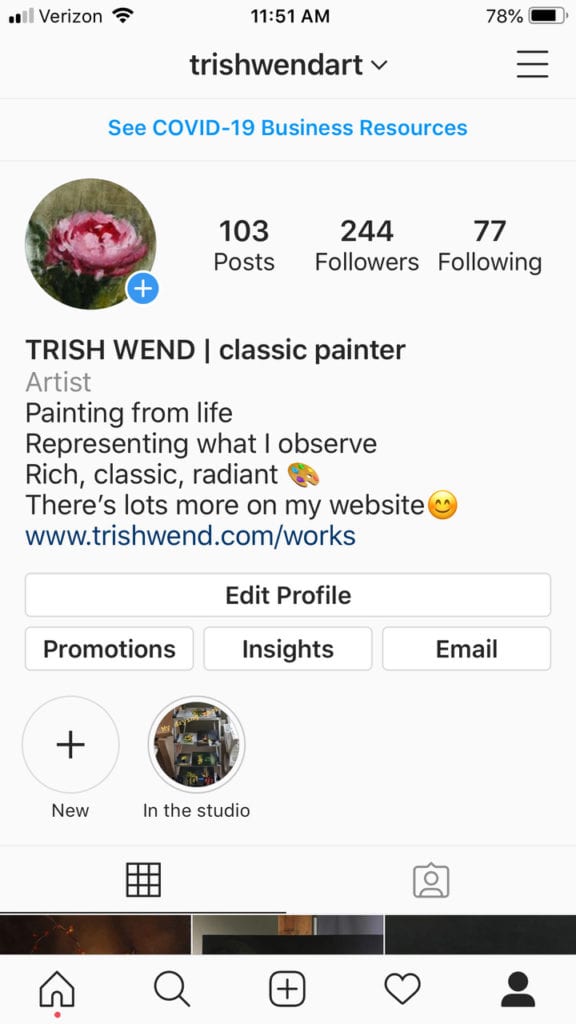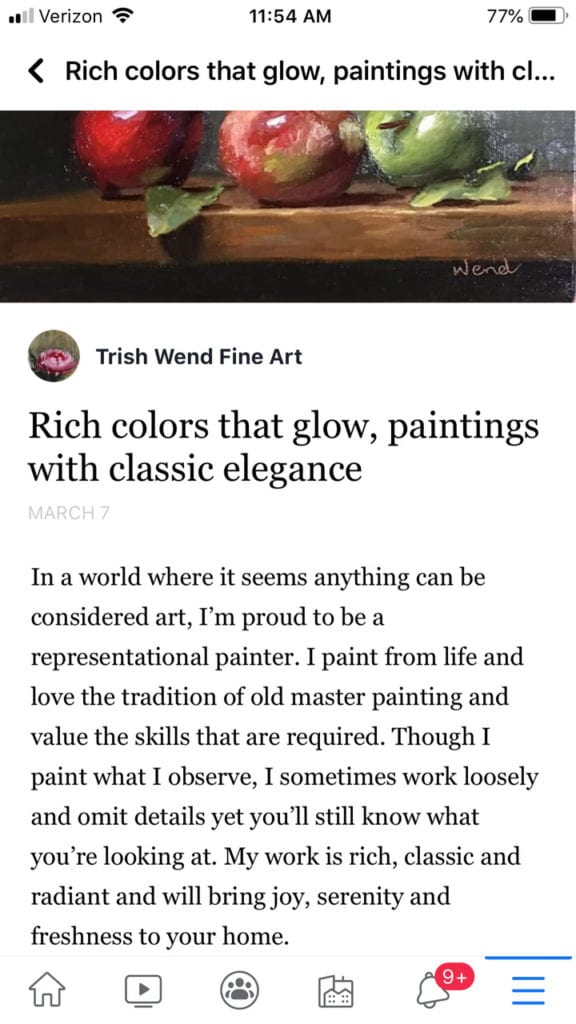Quickly, in one sentence, what is representational painting?
Keep it short.
It’s not so easy, is it?
Sure, we know what it is. We’ve been painting this way for years. There are over 3,500 of us in this organization and we have all found enthusiastic buyers that collect our work. This is proof that what the OPA set out to do 30 years ago is coming to fruition. Representational art is gaining back the respectability and value that it lost when modernism took over.
I sometimes forget this in my little town. The art guild here skews heavily towards contemporary art and I sometimes feel like a lonely outlier when my paintings are juried into shows. The art museum recently offered a six-week class on how to understand contemporary art. When I saw that, a thought jelled in my head: People who look at representational art don’t need someone to explain what it is they’re viewing. They recognize it and appreciate it for what it is. This is one of our biggest assets.
This got me thinking. What if we could leverage that? Perhaps our job is not finished.
Because if we fumble when we try to explain representational painting, is it any wonder that people, already brainwashed to believe contemporary art is preferable, don’t appreciate it? That they turn away from traditional art in favor of something they’ve heard so much about, like expressionism, abstraction or contemporary art?
It’s important to be able to define representational painting for a non-painter – a potential collector – in as few words as possible. Think of it as an elevator pitch.
We need talking points, our own little manifesto.
Imagine if we all used the same language. We’d be doing our own real branding.
We could use our talking points in casual conversation, interviews, gallery write-ups. Sprinkle them into our own artist info and bio pages. Weave them into our stories to make them uniquely our own.
For example, my bio includes this: “In a world where it seems anything can be considered art, I’m proud to be a representational painter. I paint from life and love the tradition of old master painting and value the skills that are required.”
On the left is my Instagram bio, and on the right, my Facebook “About” page. You can see how the branding is aligned across all of these.
Here are a few starter talking points that you might consider using, in no particular order:
- Representational painting is not copying, though the objects are clearly recognizable. It’s an interpretation of what we see.
- We represent what we observe.
- We use old master techniques, like chiaroscuro (the journey of light as it emerges from the shadows), sfumato (the art of subtle blending), or alla prima (wet into wet paint application).
- Representational art is accessible to everyone.
- It’s okay to like something you think is beautiful.
- People recognize beauty and appreciate it when they see it.
- Beauty is a refuge; it brings the viewer joy.
- With representational painting, people don’t need a curator to explain what they’re looking at and how they should respond to it. They know it when they see it.
- Good art doesn’t have to shock you or make you uncomfortable.
- We create paintings with depth and glow.
- We paint still lifes, landscapes and portraits that are powerfully evocative — they can bring you joy, serenity and energy.
- We like to paint with a concept that’s about something and we want you to recognize it.
- Representational painting requires a certain amount of skill in drawing, composition, perspective, familiarity with color, portrayal of light and thoughtful observation.
- Instead of rejecting these skills we value them. As David Leffel says in An Artist Teaches, “Self-expression is the refuge of the unskilled.” Amen to that!
- But representational painting is not a closed system; we can be as free as we want – loose, painterly and impressionistic.
- We can make representational painting as traditional or modern as we choose.
- Representational paintings will make you stop and stare. They draw you in.
- No one needs to tell you what kind of art you should appreciate.
- At the end of the day we all like to be with art that brings us joy, serenity and inspiration.
If all of us started incorporating language like this, we could be that butterfly creating a ripple effect in a sea of self-expression. The possibilities are limitless.
We could educate and influence potential collectors. We could release the hesitation that some (brainwashed) people still feel in wanting what is traditionally or immediately pleasing. We could increase demand, and in so doing, our collector pool. More galleries would take notice and want to show our work. And dare I say it – a museum or two? I can think of several contemporary representational painters that belong in more museums right now.
And if our work is seen as more valuable than it is presently, heck, we could even raise our prices.
What do you think? Would you like to join me on this journey? I’d love to have you with me, fighting the good fight. But first, I’d love to hear your thoughts. Please leave them in the comment box.

